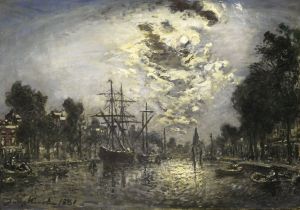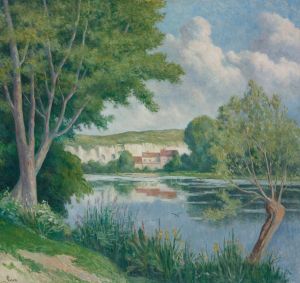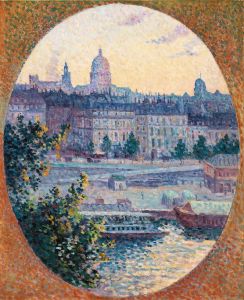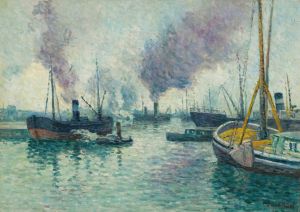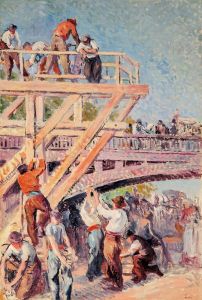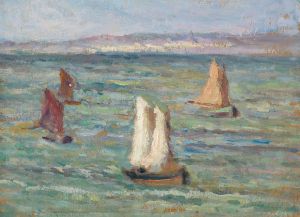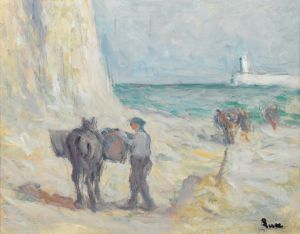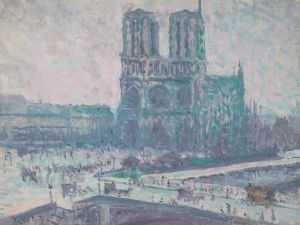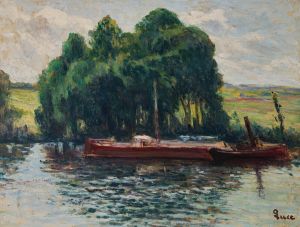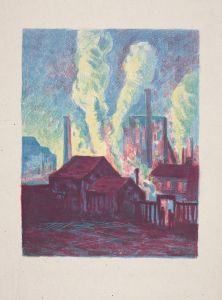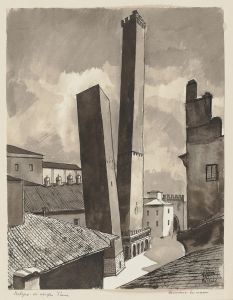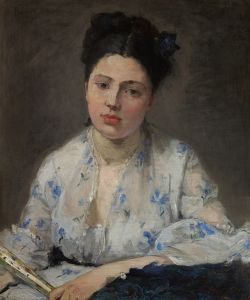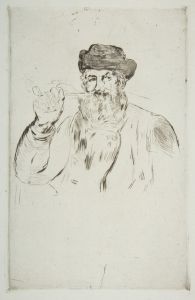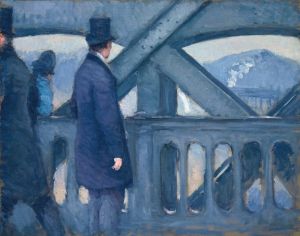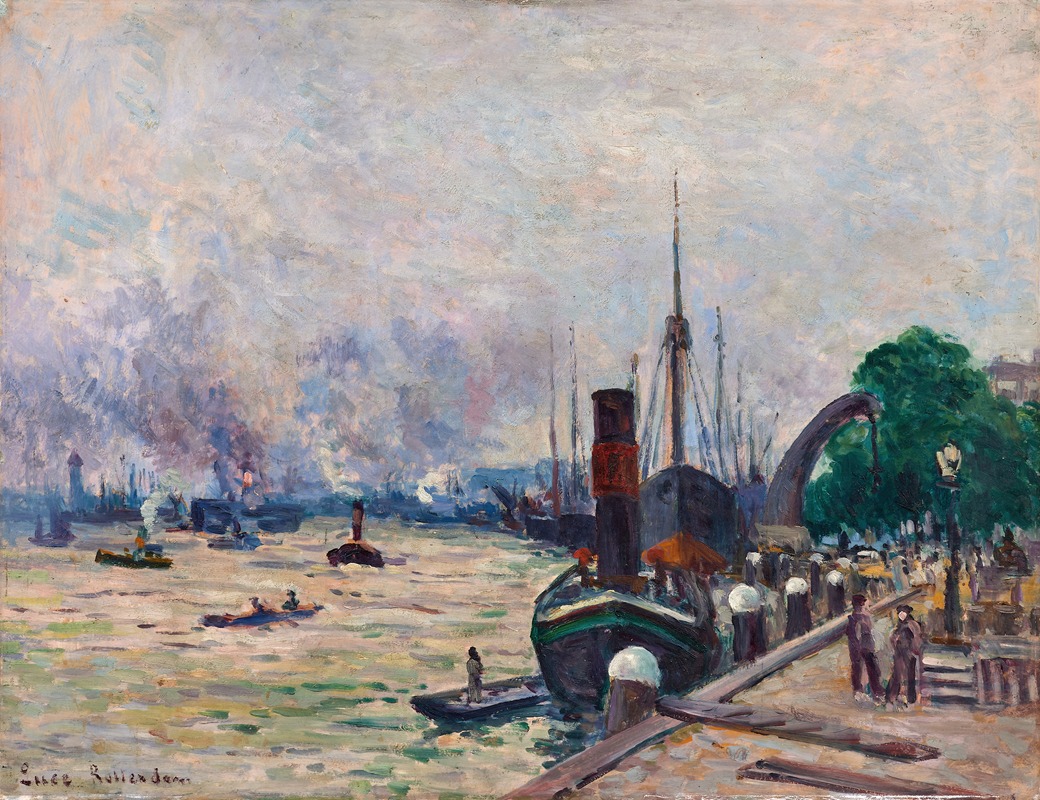
Le port de Rotterdam
A hand-painted replica of Maximilien Luce’s masterpiece Le port de Rotterdam, meticulously crafted by professional artists to capture the true essence of the original. Each piece is created with museum-quality canvas and rare mineral pigments, carefully painted by experienced artists with delicate brushstrokes and rich, layered colors to perfectly recreate the texture of the original artwork. Unlike machine-printed reproductions, this hand-painted version brings the painting to life, infused with the artist’s emotions and skill in every stroke. Whether for personal collection or home decoration, it instantly elevates the artistic atmosphere of any space.
Maximilien Luce, a prominent French Neo-Impressionist painter, created the artwork "Le port de Rotterdam" during a period when he was deeply engaged with the techniques of Pointillism and Divisionism. Born in 1858, Luce was initially trained as an engraver before transitioning to painting, where he became associated with the Neo-Impressionist movement, alongside artists like Georges Seurat and Paul Signac. This movement was characterized by the use of small, distinct dots of color applied in patterns to form an image, a technique that Luce adeptly employed in his works.
"Le port de Rotterdam" captures the bustling activity of the port city of Rotterdam, one of the largest and most significant ports in Europe. The painting reflects Luce's interest in industrial and urban scenes, a common theme in his oeuvre. Rotterdam, during the late 19th and early 20th centuries, was a hub of maritime trade and industry, making it an ideal subject for Luce, who was fascinated by the interplay of light and industrial landscapes.
Luce's technique in "Le port de Rotterdam" involves the meticulous application of color to convey the vibrancy and dynamism of the port. The use of Pointillism allows for a shimmering effect, capturing the reflection of light on water and the movement of ships and cranes. This method not only highlights Luce's technical skill but also his ability to convey the atmosphere of a scene through color and light.
The painting is a testament to Luce's commitment to social realism, as he often depicted scenes of everyday life and labor. By choosing a subject like the port of Rotterdam, Luce aligns himself with the broader Neo-Impressionist interest in modernity and the changing urban landscape. His work often reflects a sensitivity to the social conditions of the time, and "Le port de Rotterdam" can be seen as part of this larger narrative, illustrating the industrious spirit of the era.
Maximilien Luce was also known for his political beliefs, which were closely tied to his artistic practice. An anarchist, Luce believed in the power of art to reflect and influence society. His works often carried an implicit social commentary, and while "Le port de Rotterdam" primarily focuses on the aesthetic and atmospheric qualities of the scene, it can also be interpreted as a celebration of human industry and the progress of society.
Throughout his career, Luce remained committed to the principles of Neo-Impressionism, even as the art world evolved and new movements emerged. His dedication to capturing the essence of modern life through innovative techniques has left a lasting impact on the art world. "Le port de Rotterdam" stands as a significant example of his work, showcasing his ability to blend technical precision with a deep understanding of the social and industrial landscapes of his time.
In summary, "Le port de Rotterdam" by Maximilien Luce is a remarkable piece that exemplifies the artist's mastery of Neo-Impressionist techniques and his interest in the modern industrial world. Through his use of color and light, Luce brings to life the vibrancy and activity of one of Europe's most important ports, offering viewers a glimpse into the bustling world of early 20th-century Rotterdam.





